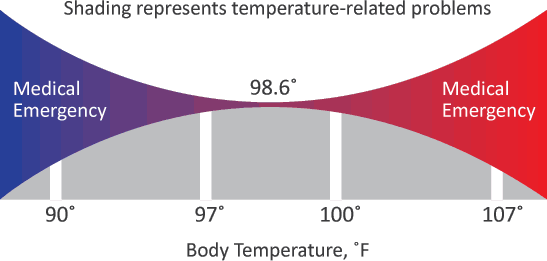Virtually all of the chemical reactions that take place in our bodies are catalyzed by enzymes. Enzymes are proteins that are dependent upon their shape, or conformation, for their activity. When enzymes are too hot they are too loose, when they are too cold they are too tight, and in either extreme the enzymes are not the right shape and cannot function optimally. When the body temperature is too low, nearly all of the enzymes in the body function less effectively. This can cause a very wide variety of complaints.

It’s well known that high fevers (107 degrees F) can cause brain damage and even death, and that very low body temperatures (< 90 degrees F) can also be life-threatening.
Likewise, a temperature a little above normal (say 100 degrees) is plenty of reason to feel badly and be excused from school or work. Clearly, temperatures that are just as low as 100 degrees is high can easily explain a classic set of symptoms. It is obvious that we are looking at a continuum, and in order to function optimally, the body must be at the optimal temperature.

Leave A Comment